- Category:
- Tag:
Applicable Business AreasPower semiconductor package makers, power semiconductor module makers
Target ApplicationsSealing material primer used in power semiconductor packaging
Applicable Business AreasPower semiconductor package makers, power semiconductor module makers
Target ApplicationsSealing material primer used in power semiconductor packaging

Power semiconductors that control large currents or high voltage are increasingly used for their advanced energy saving performance in home appliances and electric vehicles as well as industrial machines, trains, solar batteries and telecommunication base stations. But as power semiconductors become more common, the need for greater output or smaller devices has also grown, causing the operating temperatures of power semiconductors to rise. This condition often results in delamination due to the different thermal expansion rates between sealing materials and other parts. Although heat resistance is a crucial feature of a sealing material, increasing heat resistance while preventing delamination has proved problematic because of the trade-off between a sealing material’s heat resistance and adhesiveness or stress reduction.
One conventional method to prevent delamination of a sealing material and lead frame, without changing the design of the sealing material, is to roughen the surface of the lead frame. However, the effectiveness of this method is limited if delamination, which undermines reliability, occurs with other parts such as wires or chips, rather than the lead frame. Lead frames also need more effective measures than surface roughening to strengthen adhesion with sealing materials.
As a solution, Resonac proposes "HIMAL", a heat-resistant, insulating coating material used as a sealing material primer to increase adhesion between the lead frame, semiconductor devices or wires and the sealing material, and reduce internal stress. By maintaining a sealing material’s heat resistance while preventing delamination, "HIMAL" contributes to higher power semiconductor reliability.
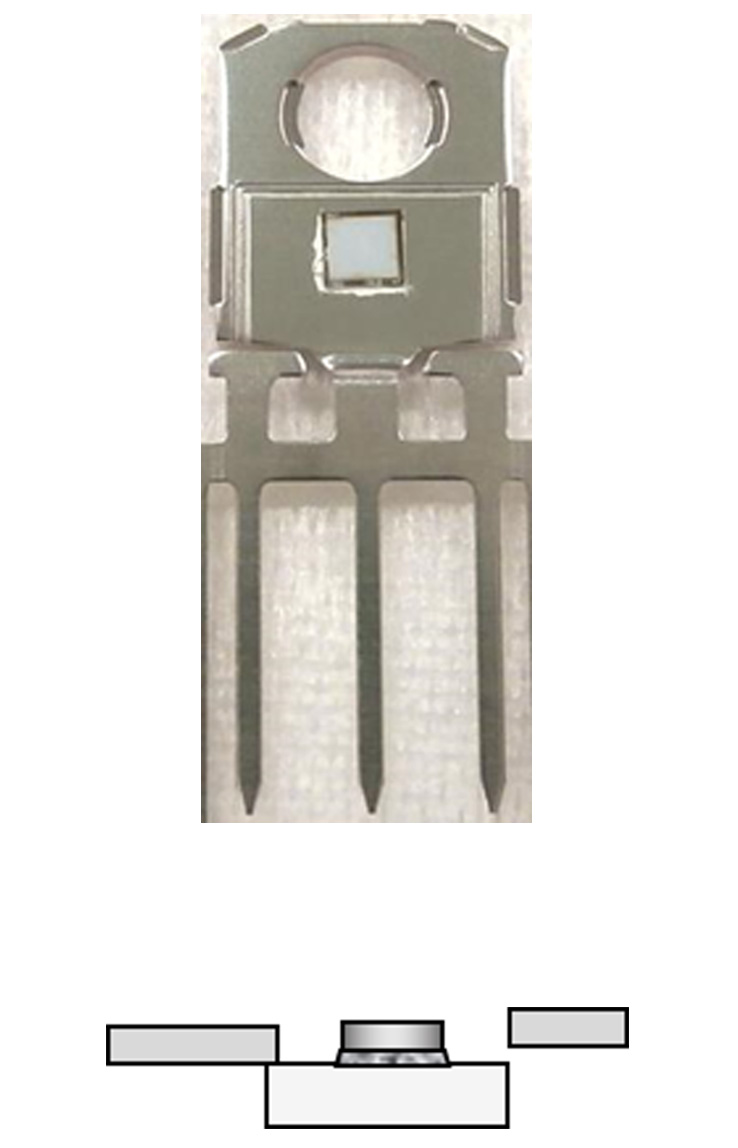
1)Die bonding
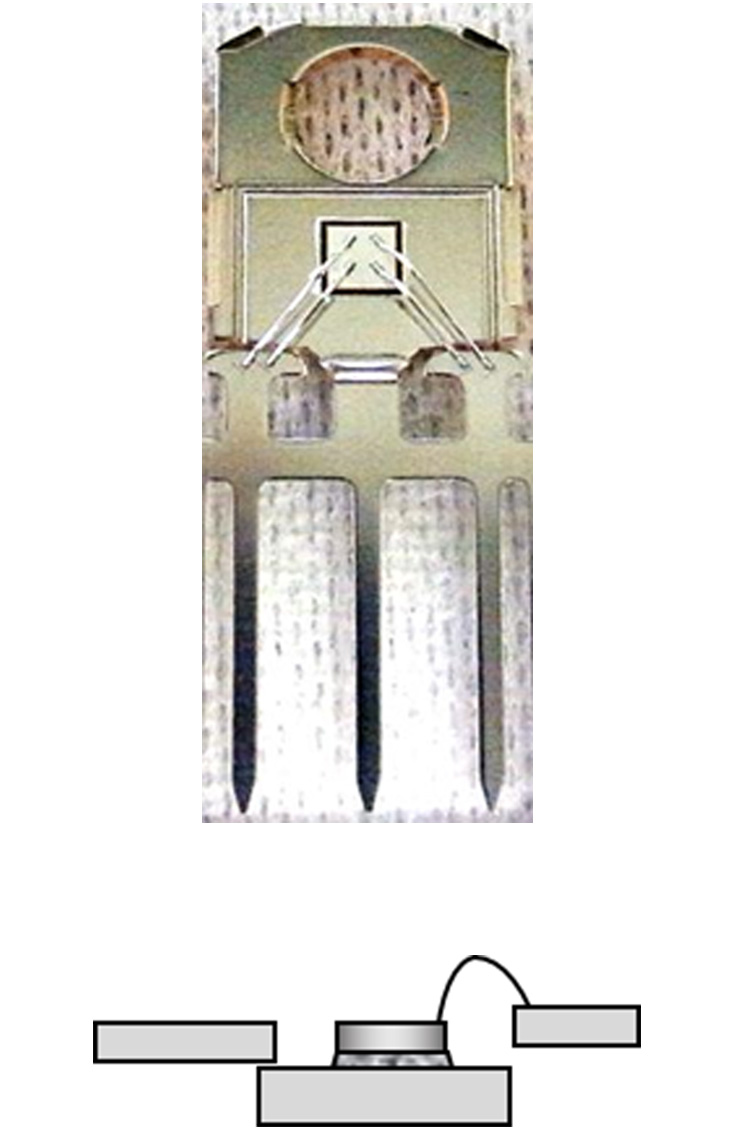
2)Wire bonding
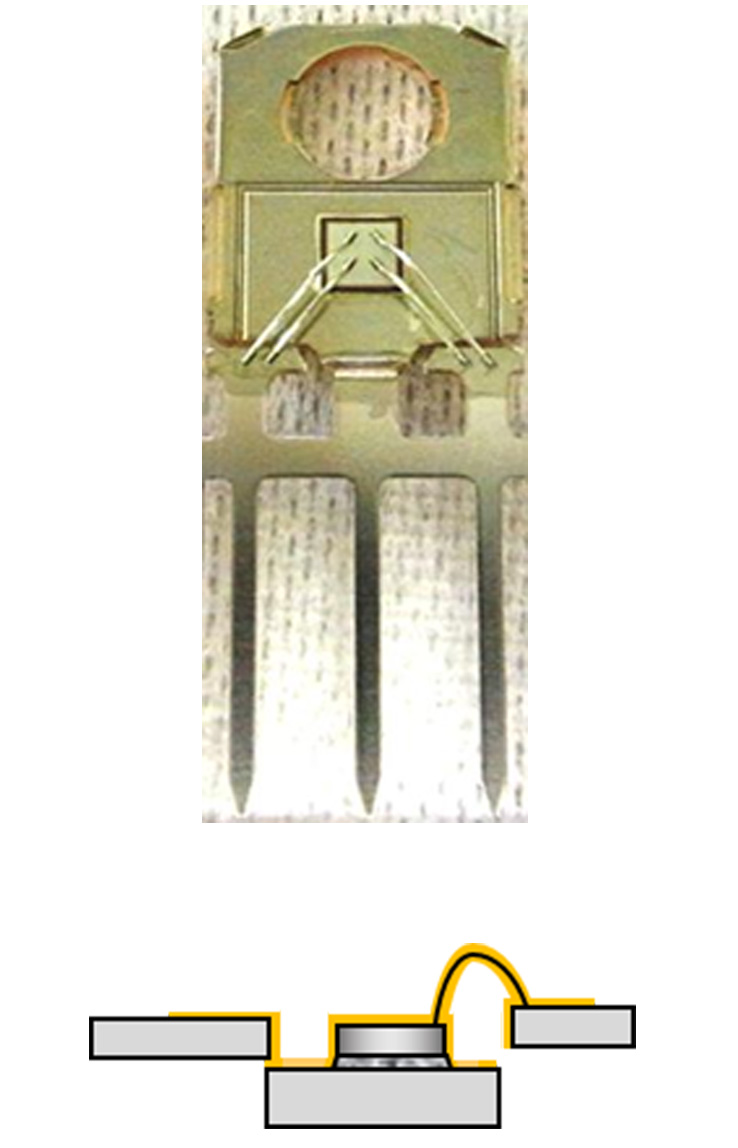
3)Applying HIMAL and drying
Example) 80℃/1h+210℃/1h※
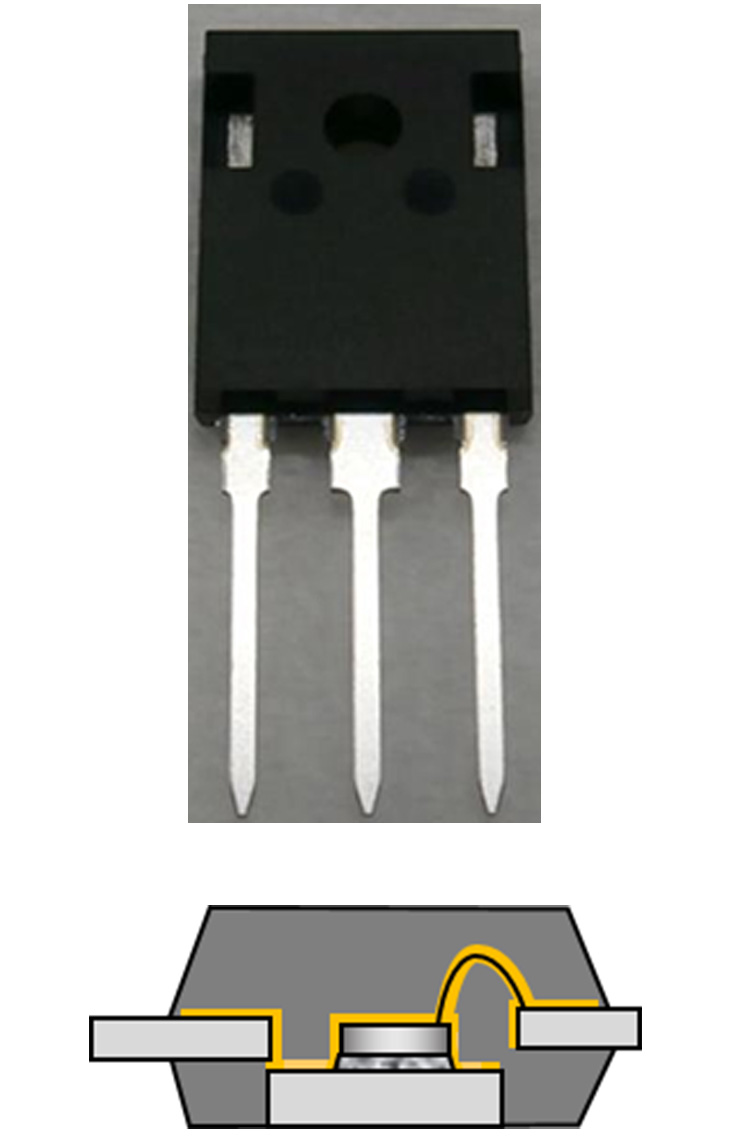
4)Sealing
As a power semiconductor’s operating temperature rises, differences in the heat expansion rates between the sealing material and the connected parts, as well as increased internal stress, cause the sealing material to separate from other parts. Heat resistance is crucial for sealing materials expected to withstand high operating temperatures, but if the resin is hardened to raise Tg with the aim of increasing the sealing material’s heat resistance, internal stress also rises due to the higher elastic modulus. Meanwhile, the use of a rigid structure in the sealing material to achieve greater heat resistance weakens interfacial adhesion as high-polar functional groups are kept off the surface. In this way, measures to improve the heat resistance of a sealing material exposed to high operational temperatures often accelerate delamination of the sealing material and other parts due to increased internal stress or weakened interfacial adhesion. It is particularly difficult to secure the reliability of power cycling, that is, turning a device on and off repeatedly.
Resonac’s "HIMAL" is a heat-resistant, insulating coating material with Tg at 220 degrees Celsius or higher, storage modulus of around 3GPa, and dielectric breakdown voltage of 250V/μm or higher. "HIMAL" demonstrates greater flexibility compared with sealing materials or other parts, and can reduce a device’s internal stress even under rising temperatures or during processing.
Applying "HIMAL" as a sealing material primer prevents delamination of the sealing material and other parts, a feature that not only improves reliability but expands the choice of sealing materials. "HIMAL" also contributes to greater reliability by easing the stress on parts.
The shear strength between the substrate and the sealing material (epoxy molding compound) was compared using three types of nickel substrates: unprocessed, processed with surface roughening, and coated with "HIMAL". The shear strength (adhesion) roughly doubled by surface roughening and increased approximately fourfold by "HIMAL".
Condition
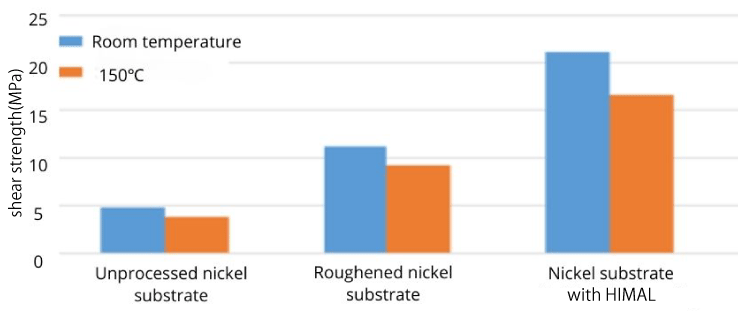
Shear strength comparison with competing technologies (nickel substrate)
According to internal evaluations of the 1-in-1 module power cycling tests (ΔTj=100℃), its lifetime was extended from 23,000 cyc to 87,000 cyc when applying "HIMAL". We believe "HIMAL" can help prevent delamination by increasing adhesion and reducing stress at the bottom of the Al wires.
The sample without "HIMAL" showed a white contrast at the end of the tests, indicating that delamination had occurred, whereas the same contrast was not observed in the sample using "HIMAL".
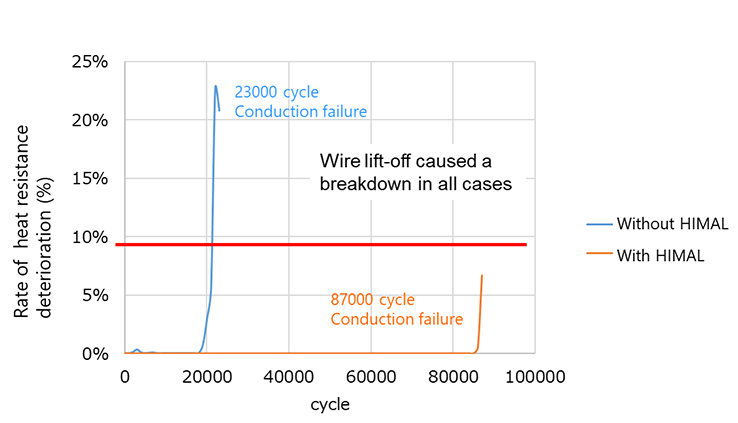
Power cycling test results
Power cycling test (PCT): ΔTj = 100℃、fixed current value mode (test value n=2)
The figure below shows the module composition used for testing.
Chip: Si-IGBT
Wire: Al wire
Substrate: DBA substrate
Case: PPS
HIMALstandards:
①Without HIMAL (Ref.)
②With HIMAL
Sealing: liquid epoxy resin

A simulation was run on accumulated plastic deformation at the bottom of a wire under the following conditions. By applying "HIMAL", stress concentrated on the Al pad’s interface was eased and dispersed.
A wire’s strength is the lowest around the pad’s interface and the wire lifts off easily under stress. Once lift-off begins, stress on the area increases further, as shown in the simulation image. The stress simulation shows "HIMAL" slowing down the progress of wire detachment and thus improving the device’s reliability.
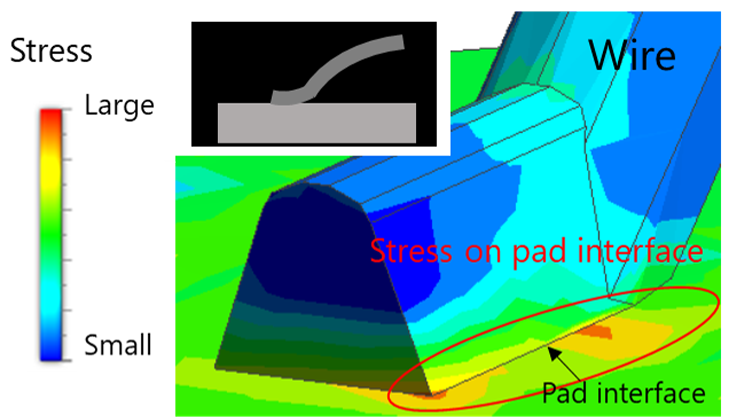
Without HIMAL
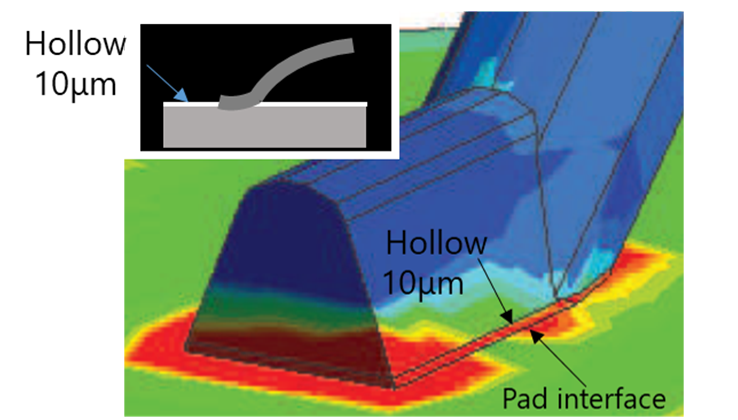
With delamination (hollow)
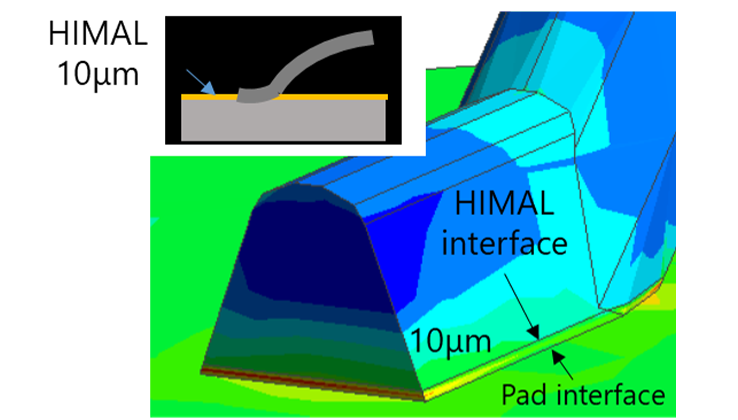
With HIMAL
[Analysis condition]
HIMAL: 10μm, PCTtest: ΔTj=100℃ fixed current value mode, 2 cycles On time: 2s / off time: 3s、Assumed wattage: 420W
Update date: 6th March, 2024
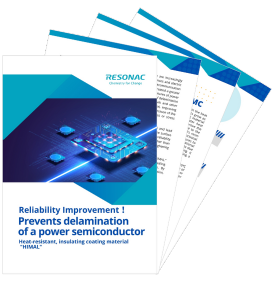
Contact Us
Please don't hesitate to contact us if you have any questions.